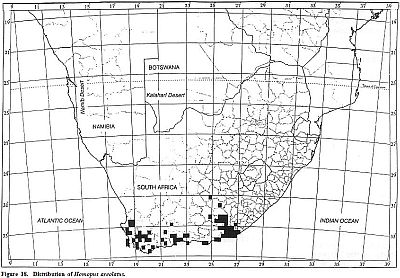Common Tent Tortoise Psammobates tentorius
Family: Testudinidae

Tankwa Karoo
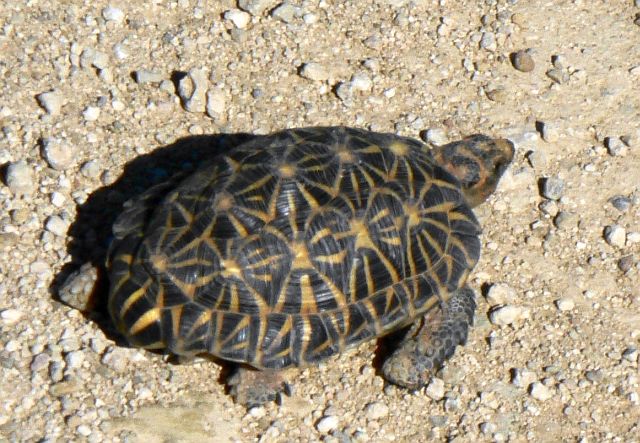 Psammobates tentorius ssp. tentorius
Description
Psammobates tentorius ssp. tentorius
Description
This is a small tortoise that comes in an amazing range of shapes and colours.
Dependent upon subspecies, the carapace is domed or flat, with or without raised scutes ("knoppies"), and is unhinged. A nuchal is present, typically broader than it is long.
There are five vertebrals, four costals, 11 marginals, with those on the bridge being almost square in contrast to P. geometricus, and a single supracaudal. The paired gulars are longer than broad, the humerals are separated from or in narrow contact with the axillaries (2-3, rarely 1), and the single inguinal is usually in contact with the femorals.
The forelimbs are covered in large, abutting scales and have five claws. Buttock tubercles are typically present but may be reduced in western races, the tail lacks a terminal spine. The beak is usually hooked.
Coloration is varied (see subspecies descriptions for the most typical patterns). In most populations, a well developed rayed pattern occurs on the carapace scutes, but never on the plastron, in contrast to other Psammobates.
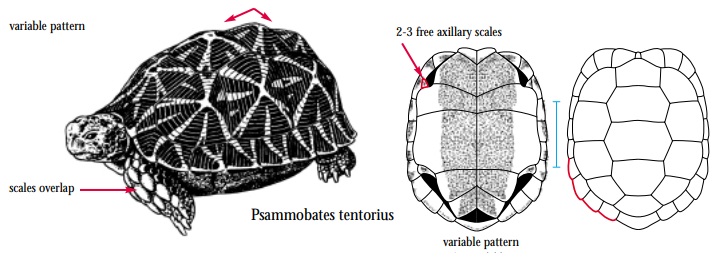
- Psammobates tentorius.jpg (67.67 KiB) Viewed 8035 times
Size
Females grow much larger than males (maximum length: female 145mm, maximum weight 400g; males 100mm, 170g)
Taxonomy
Numerous species and subspecies have been described.
P. tentorius tentorius (Karoo Tent Tortoise) has a plastron with a solid, sharply defined dark brown or black central blotch, which has only very reduced areas of lighter pigmentary intrusion. The domed carapace has a geometric pattern of thin yellow rays on a black background with well-developed "knoppies." It attains a maximum length of 125mm.
P. tentorius trimeni (Namaqualand Tent Tortoise) has a bright yellow or light brown plastron with the central figure sharply defined, but fragmented by lighter rays or broad pigmentary intrusions. The carapace is coloured with a geometric pattern of wide yellow to orange rays on a black background. The striking colour pattern of this species is typically starred or rayed. The number and size of the rays from the central point of each shield vary, and like the other starred tortoises, the colour ranges from light to darker yellow on a dark-brown to black background. In this species, however, there are bright orange-red infusions at the bottom of each ray that makes it very attractive indeed. The straw-coloured underside of the shell or plastron has a central black region. The domed carapace has well developed "knoppies" and reaches a maximum length 145mm.
P.tentorius verroxii (Bushmanland Tent Tortoise) often has a uniformly pale yellow or light brown plastron, occasionally with an indistinct dark central blotch. The carapace is often uniform russet or dark brown, but usually faintly patterned with darker brown rays. The colour pattern is varied, but it is primarily a starred or rayed pattern. The number and size of the rays from the central point of each shield vary, and the rays are generally light to darker yellow on a dark-brown to black background."Knoppies" are rarely developed, the shell often low, smooth and rounded. The maximum length is 145mm.
Geographic distribution
This species is found throughout the central karroid regions of the Cape, from Grahamstown in the east and Matjiesfontein in the west. In the north their range skirts the sandveld of the Kalahari and extends into southern Namibia. There are large intergrade zones between the recognized supspecies.
Main ranges of the subspecies:
P. t. tentorius occurs in the southern and eastern Karoo, from Grahamstown to Matjiesfontein, including the Little Karoo, intergrading with P. t. verroxii in the central Karoo.
P. t. verroxii occurs in the northern Karoo, Bushmanland and north of the Orange River into the escarpment grasslands of southern Namibia, intergrading with
P. t. trimeni in Bushmanland, and along the escarpment edge of southern Namibia.
P. t. trimeni occurs in Little Namaqualand along the northern Cape coastal region, from Lambert's Bay in the south, extending into the Richterveld and across the Orange River into the lowlands of southern Namibia. Inland it reaches the Namaqualand/Bushmanland boundary East of Springbok and may be found in the Knersvlakte.
 Habitat
Habitat
Habitat is varied, usually arid karroid semidesert, with low scrub, shallow, rocky soils, and an annual rainfall of less than 100 mm with hot summers and cold winters.
P. t. trimeni, inhabits succulent karoo, characterized by sandy soils, numerous small succulent plants (particularly
Crassulacae and
Mesembryanthemacae), and low winter rainfall.
P. t. verroxii inhabits a transitional region between semidesert and rocky grassland and sandveld, with slightly higher rainfall.
Behaviour
During droughts they burrow into sandy soil at the base of low scrub, emerging after rains. They are active in the cooler parts of the day (early morning and evening), when they feed on small succulents and annuals. They drink by raising the rear of the shell during rainshowers, sipping the water that runs down the shell and forelimbs.
Diet
They depend on a very specialised diet including assorted Karoo bushes, mesem-bryanthemums, annuals and other South African succulents.
Predators
Predators include small carnivores, rock monitors, eagles, crows, and even ostriches. In the Little Karoo, the Pale chanting goshawk appears to be a major predator on juvenile Psammobates.
Reproduction
Copulation occurs in spring (October-November) and nesting has been reported from September through January. Clutch size is very small; 1-3 eggs. They hatch after about 220 days, and hatchlings have been recorded in May, measuring 25-30mm in length.
Links:
William R. Branch: Field Guide to the Snakes and Other Reptiles of Southern Africa

 Comments are welcome here.
Comments are welcome here.


 Namaqualand
Namaqualand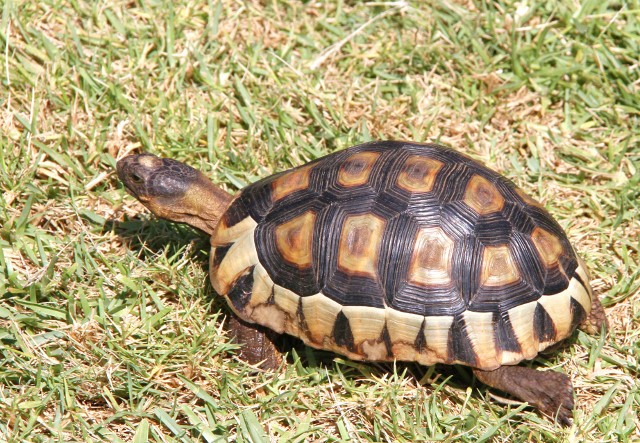 © nan
© nan

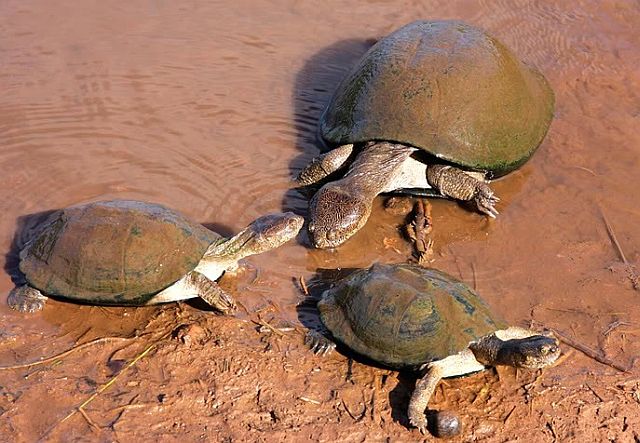 © leachy
© leachy © leachy
© leachy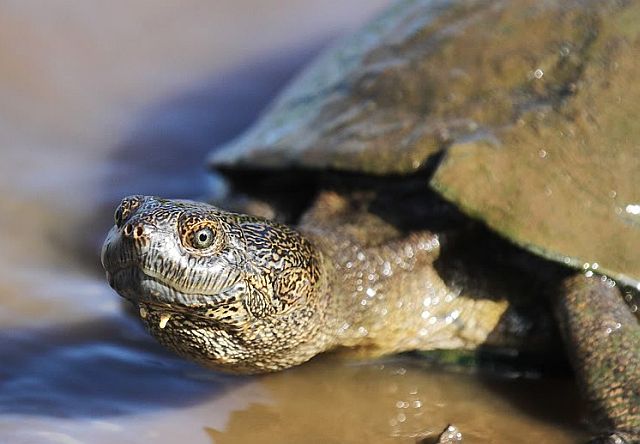 © leachy
© leachy © leachy
© leachy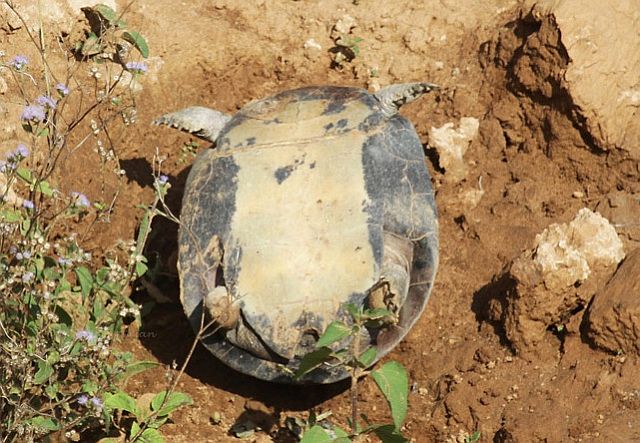 Plastron © leachy
Plastron © leachy Tankwa Karoo
Tankwa Karoo Psammobates tentorius ssp. tentorius
Psammobates tentorius ssp. tentorius
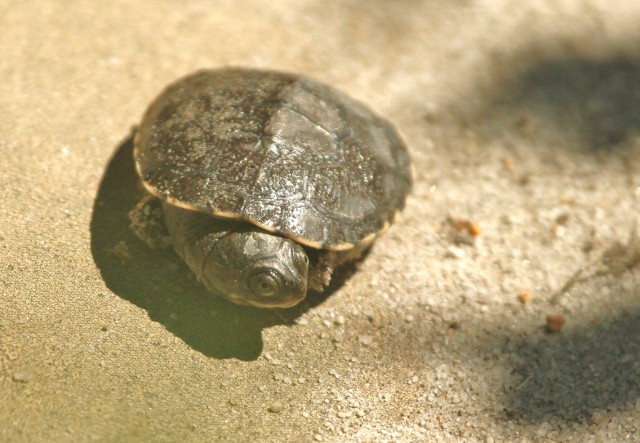 Rondevlei Nature Reserve
Rondevlei Nature Reserve
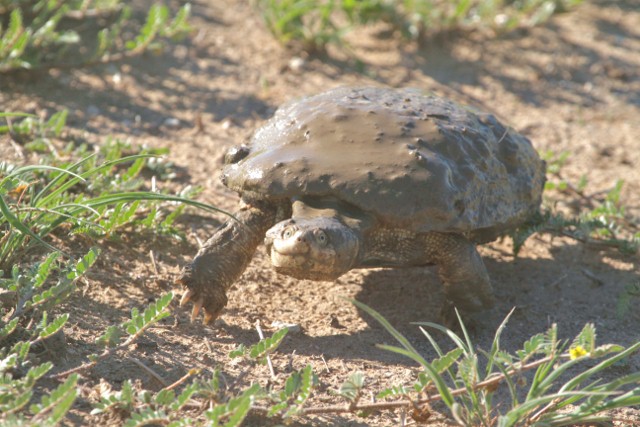 Kgalagadi
Kgalagadi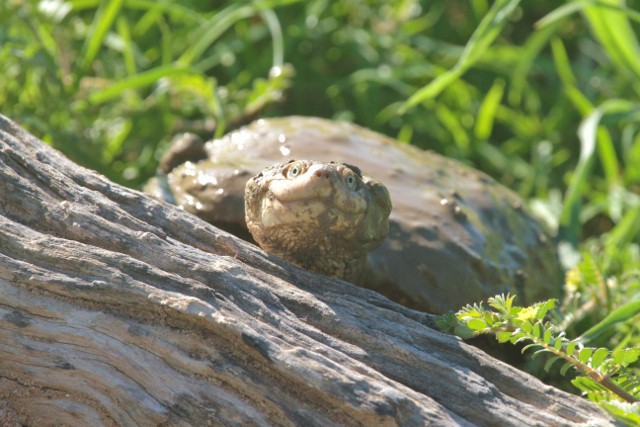
 Addo NP
Addo NP

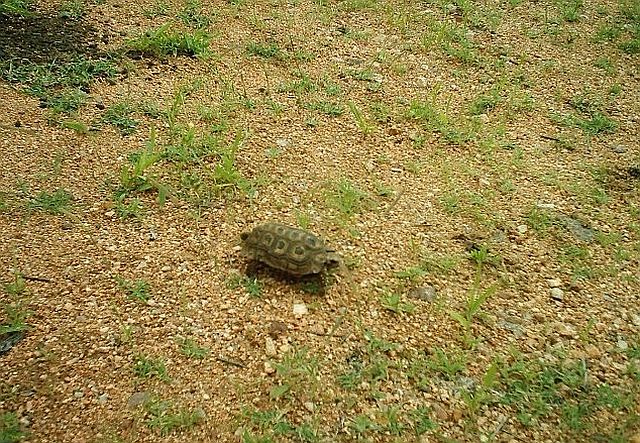
 © BluTuna
© BluTuna © Twigga
© Twigga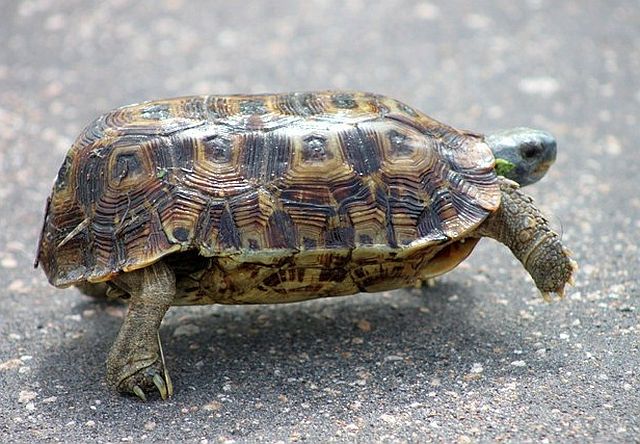 © Heksie
© Heksie


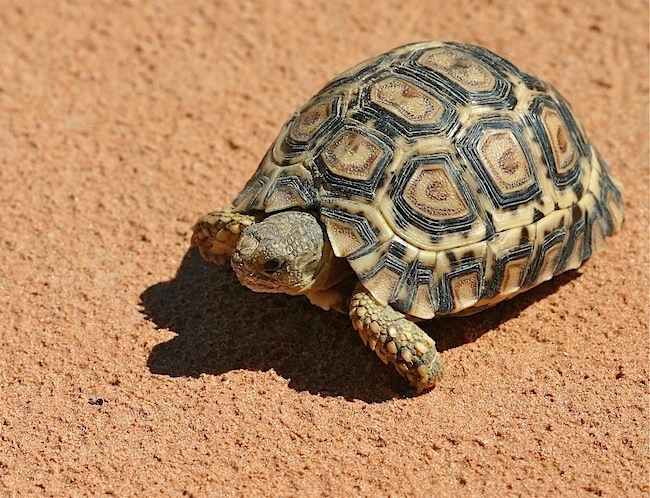

 © JustN@ture
© JustN@ture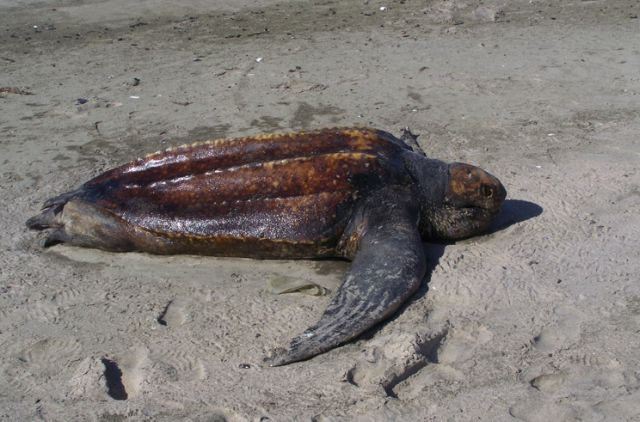 © Kesheshe
© Kesheshe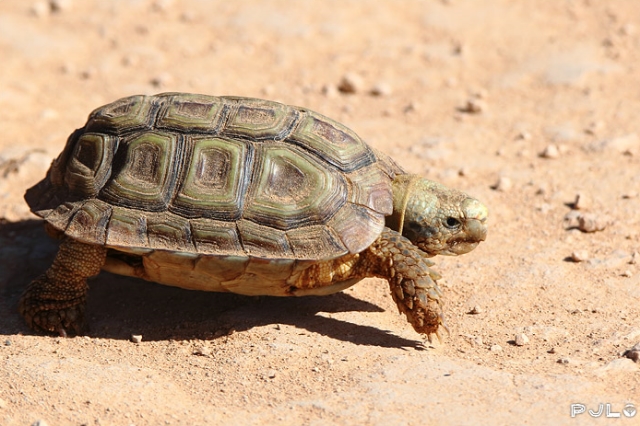 © PJL
© PJL